
Welcome to the daily analytical report about Steemit.
All the information presented in this report are based on the data collected from the blockchain until 2017-10-17 midnight UTC time. The goal of this report is to provide you with a clear view on what is happening daily on Steemit.
1. New users
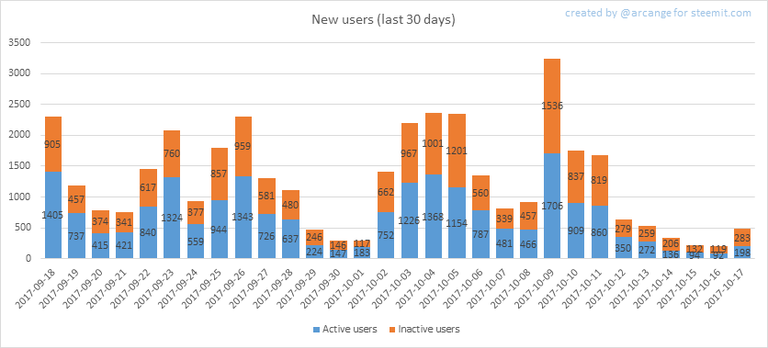
This chart shows the number of newly registered users on Steemit and how many of them became active. We see that a lot of accounts are registered, but never used.
Warning: this graphic is kind of dynamic! A user can register one day and become active a few days later. Therefore, the number of active users on a specific date may change from day to day.
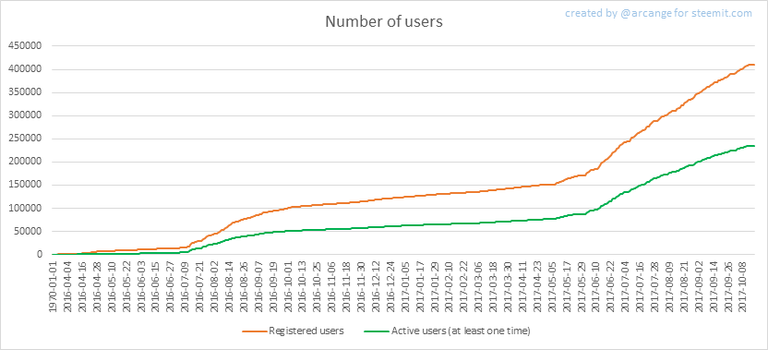
In this graph, the orange line shows the total number of registered accounts.
The green line shows how many of them have been active at least once (by active users, I mean those who made at least one post, comment or upvote). They are included even if they become inactive later.
2. Active users
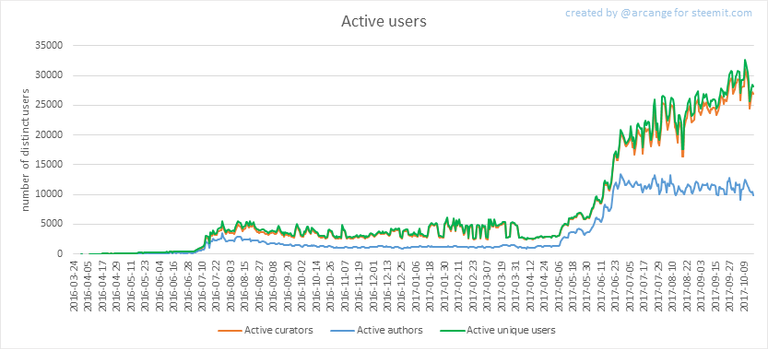
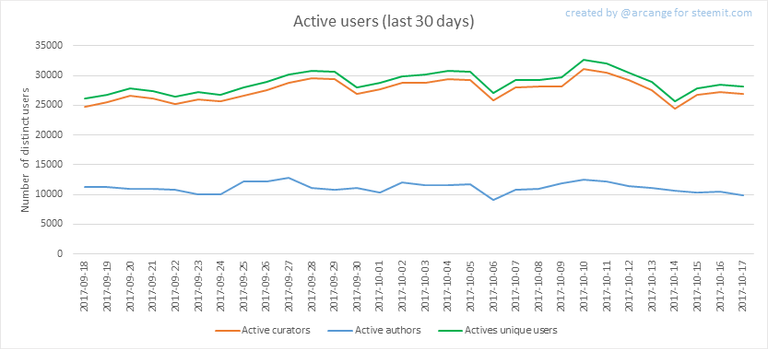

These graphs show the activity of users over time and in more details for the last 30 days. They use the same definition for active user as stated above.
The last graph is a monthly summary of the active users. It allows you to compare Steemit's values to those one usualy published by other social networks.
3. Posts And comments
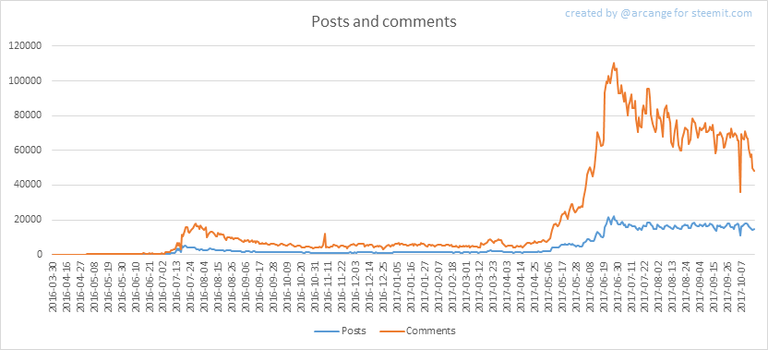
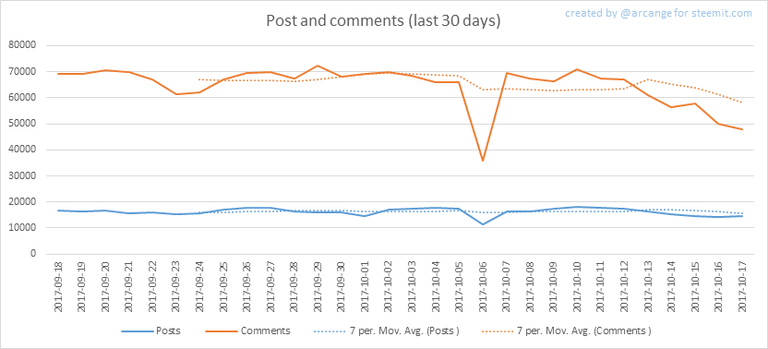
These graphs show the evolution of posts and comments for the whole blockchain lifetime and for the last 30 days.
4. Curation
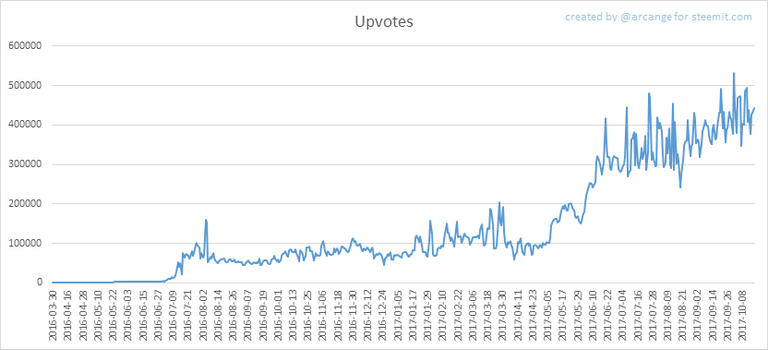
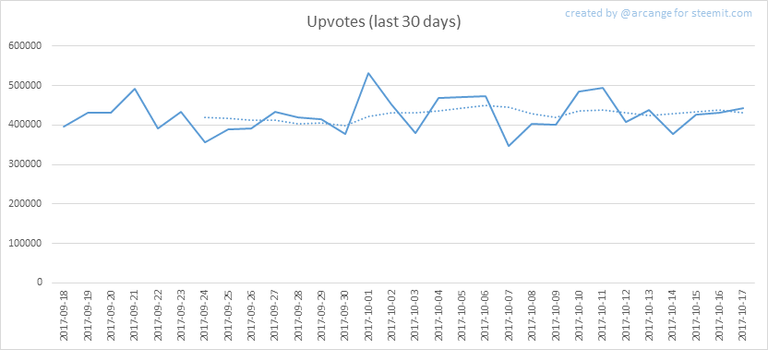
These graphs show the evolution of curation (upvotes) for the whole blockchain lifetime and for the last 30 days.
5. Daily transactions
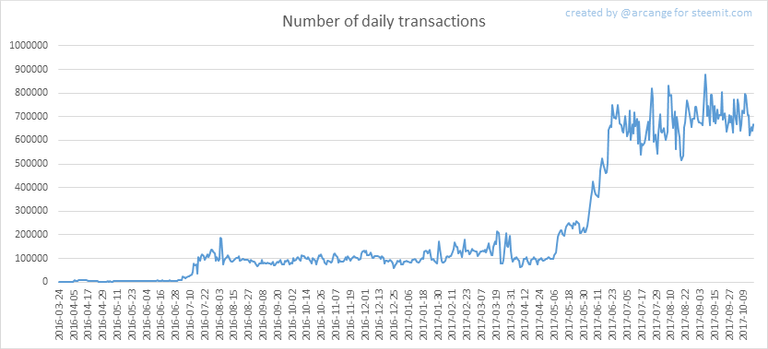
This graph shows the number of daily transactions. This give you an idea of the whole activity on the blockchain.
6. Categories
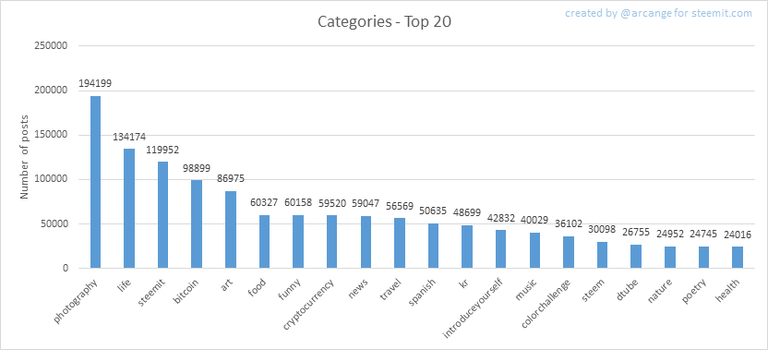
This graph shows the tag has been the most used for publishing posts for the whole blockchain lifetime.

This graph shows the tag has been the most used for publishing posts last day.
7. Distribution
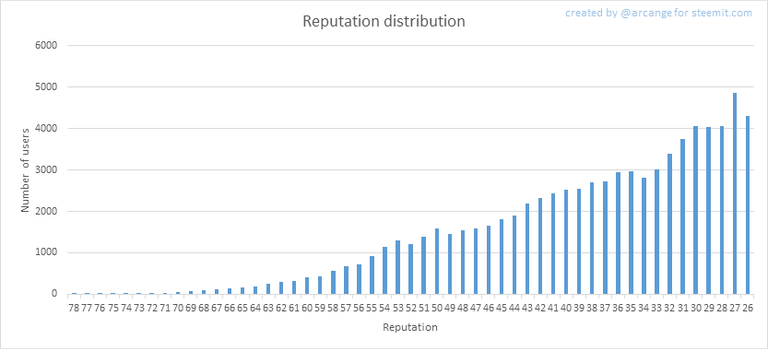
This graph shows the distribution of the reputation among users. Accounts with a reputation lower than 25 have been removed to keep the graph readable.
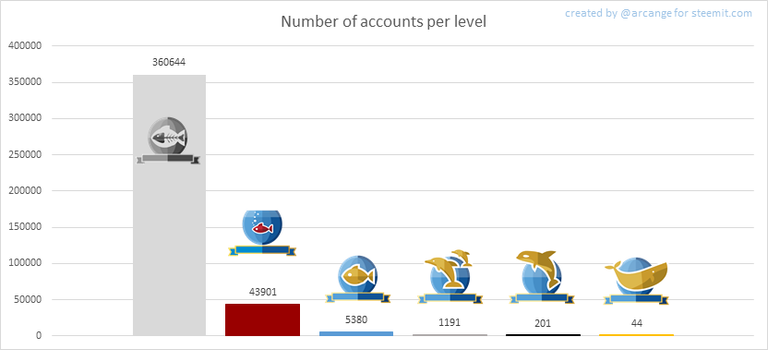
This graph shows the number of users according to their voting power (it now includes the new "Inactive" and "Red Fish" levels - check @steemitboard blog for more info about this).
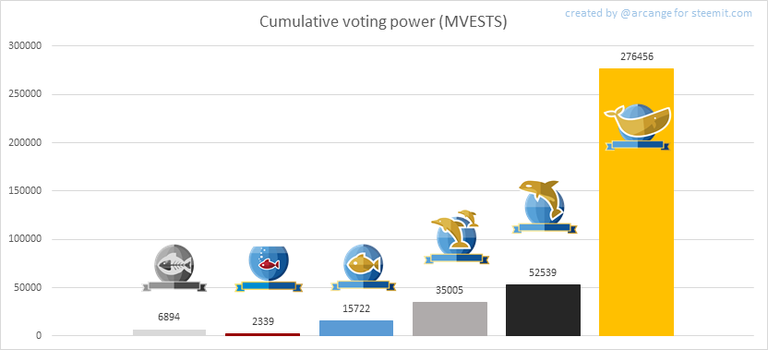
This graph shows cumulative distribution of the voting power. It enables to see the total voting power of each level.
8. Payout evolution
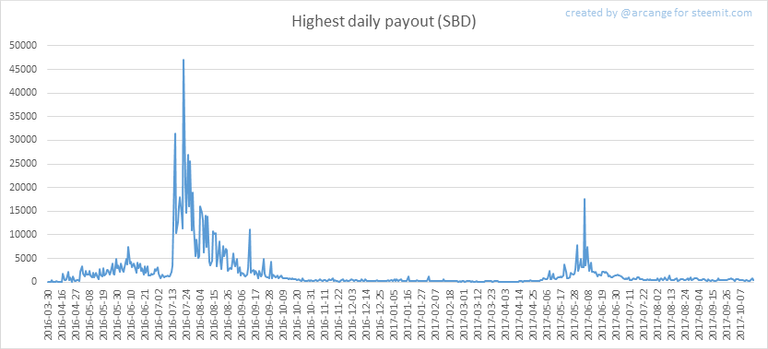
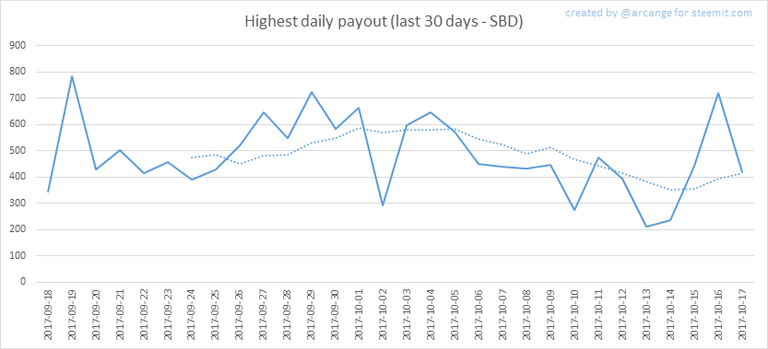
These graphs show the maximum reward paid on a post (or comment) for each day (whole blockchain life and last 30 days).
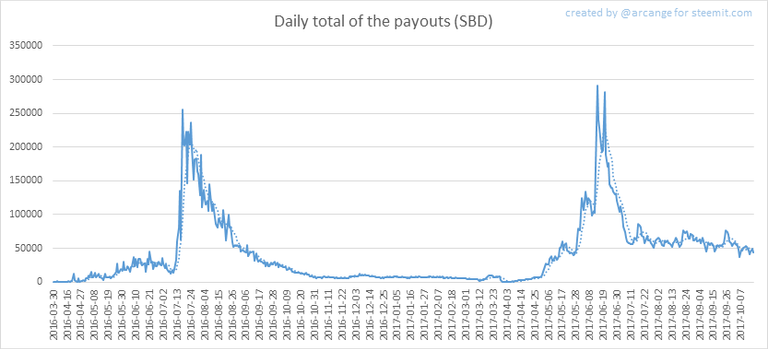
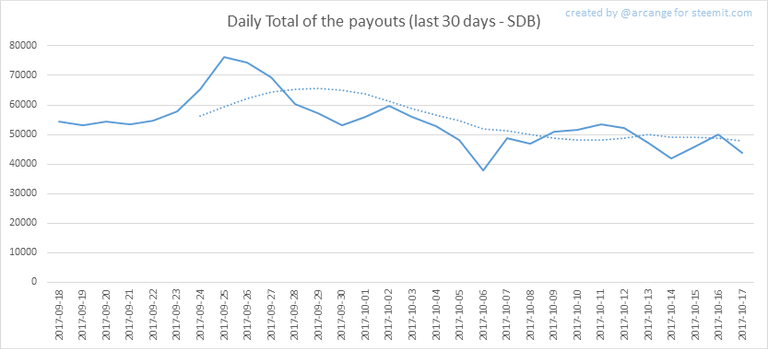
These graphs show the total of the distributed payout (posts and comments) for each day.
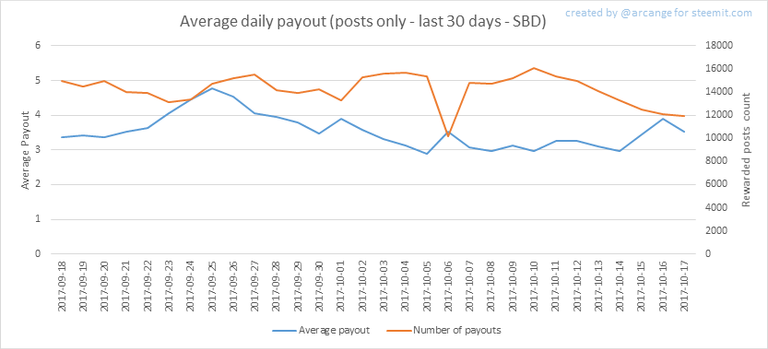
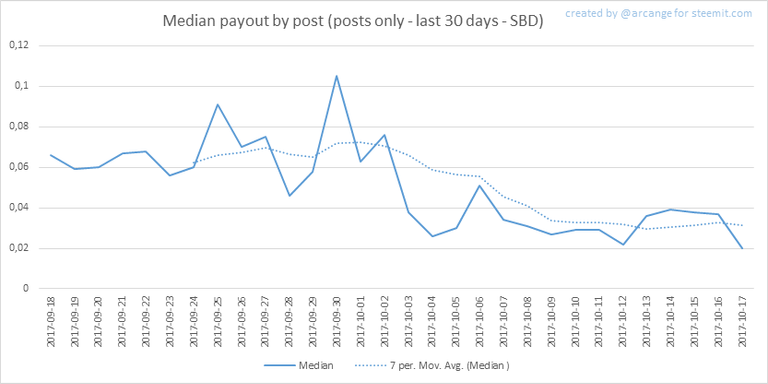
These graphs show the average and median payout per post for the last 30 days.
The last one indicates that if yesterday you got the latest value shown on this chart for your post, you should be happy because there are as much people that have earned more than you than people that have earned less than you.
I hope you find those stats useful. If you would like to see different stats, feel free to drop me a comment. Your feedback is more than welcome.
Thanks for reading.

footer created with steemitboard - click any award to see my board of honor
Support me and my work as a witness by voting for me here!

You Like this post, do not forget to upvote or follow me or resteem
Steemit is going down isn't it ?
i'm actively following the daily stats posted from arcange to temper the optimism/hype discussed within steemit... clearly the growth spike around August is what served to spark the general optimism for the platform as a concept at scale, but upon critical analysis of the numbers we see here it's important to compare the true numbers of the active users with community/brand/site traffic one might see for a focused subject/purpose.
With that in mind, I would lean towards favoring such optimism of the community: if it were surrounding a more specific subject/purpose like art, education or news, but with such a broad and unguided platform design the numbers are quite unremarkable except for the minor footnote of the first definable traction point in august.
For example, I launched a video site in 2005 right around the same time as YouTube and within the first month, and just two promotional videos, I attracted the unique/active user numbers that steem took a year of organic growth to only just recently spark-up to that level of traffic. Admittedly, I doubt my user-registration and comment/content-contribution metrics matched that of steem today, but I didnt build the site for crowdsourcing (it was more of a brand/channel/magazine for interesting videos found dispersed around the internet at the time). With that in mind, steem's strength in genuine 'membership' will be both its competitive advantage and ultimate downfall if the system mechanics don't scale to ensure crowdsourced-leadership. I'm all for opening the web and the power systems of the world, but there's an equally valid philosophy for not allowing pure democracy in organizations... the communication costs are simply too high and genuine dedication spread too thin for effective leadership to spontaneously occur... it'll be interesting how this discussion will evolve in terms of creating moderators or special-privileges to maintain the broad set of tags/topics this platform wishes to foster for the future.
At the end of the day, for steem to succeed, or simply sustain its recent attention, there will be lots of work/contribution needed from community to foster and further the value-mechanics of the vision as compared to what I feel everyone is currently feeling the frustration in growth spawned by those promoting the platform purely around profiteering over the core meritocracy reward system intended for content.